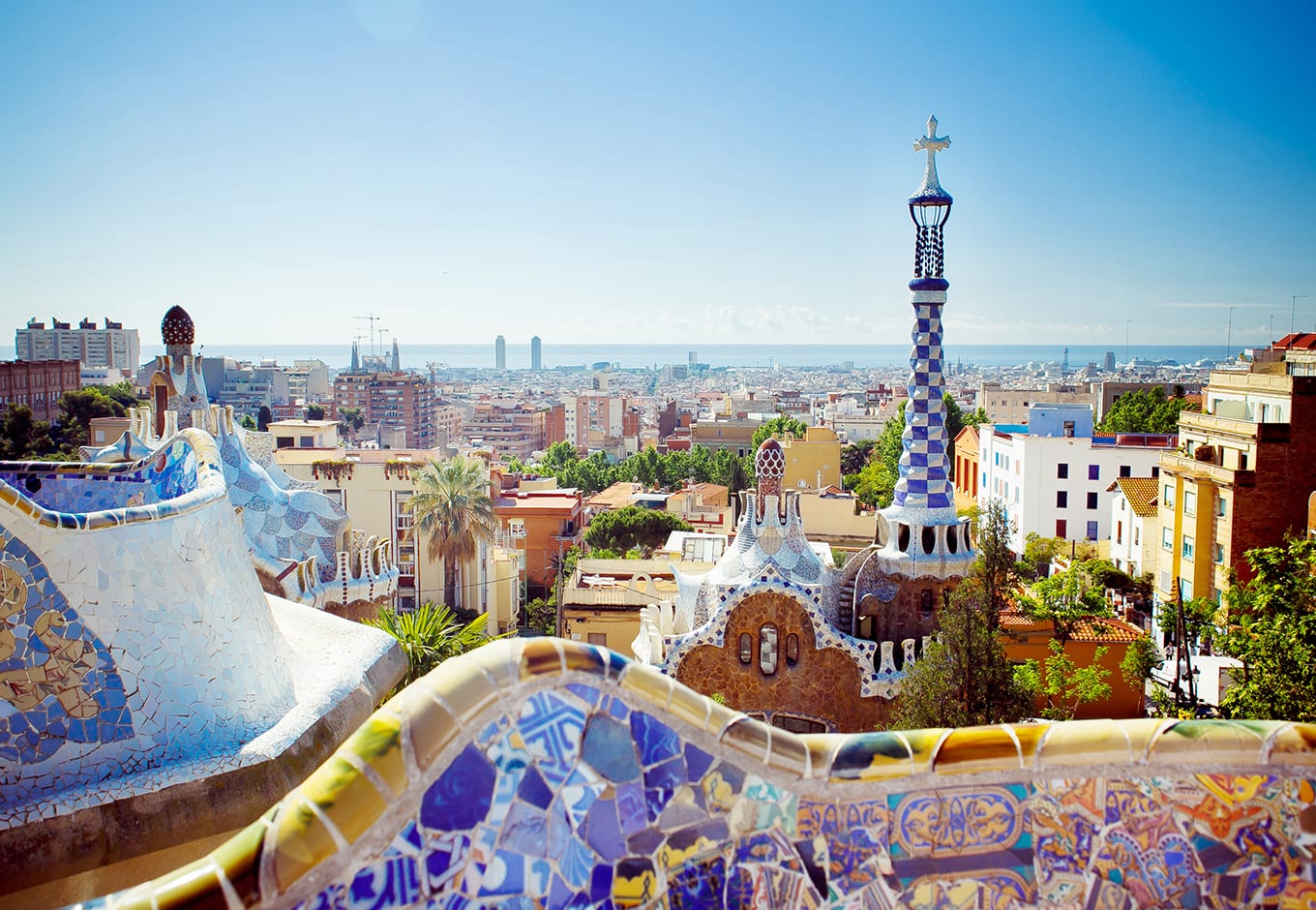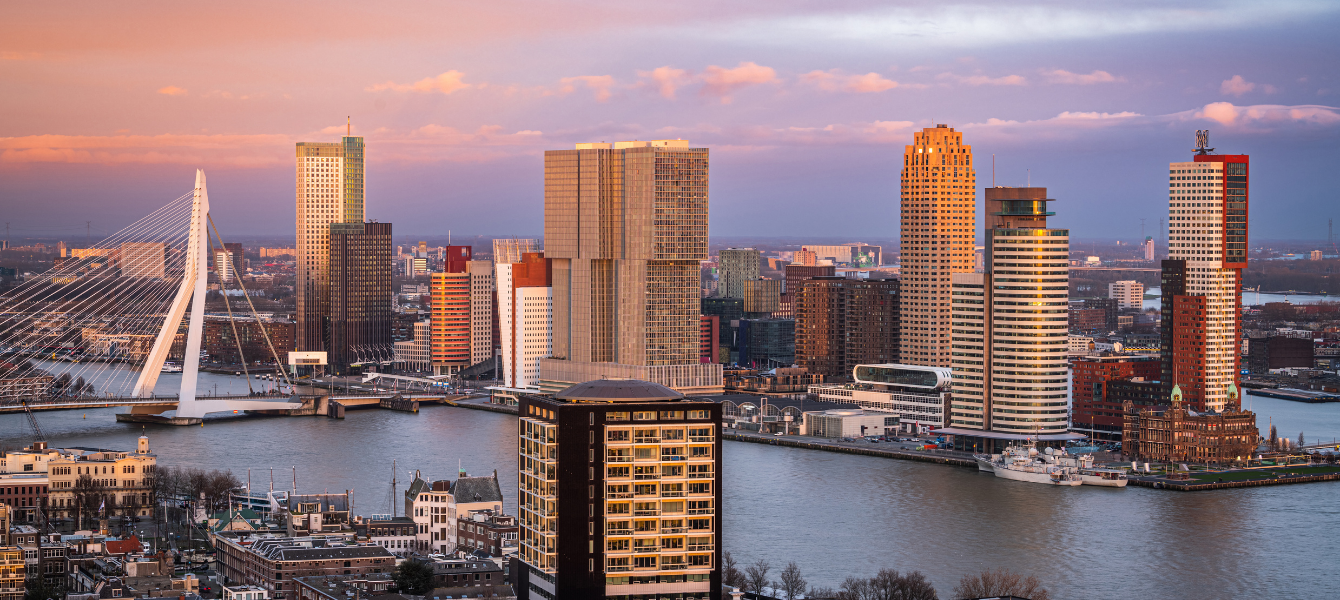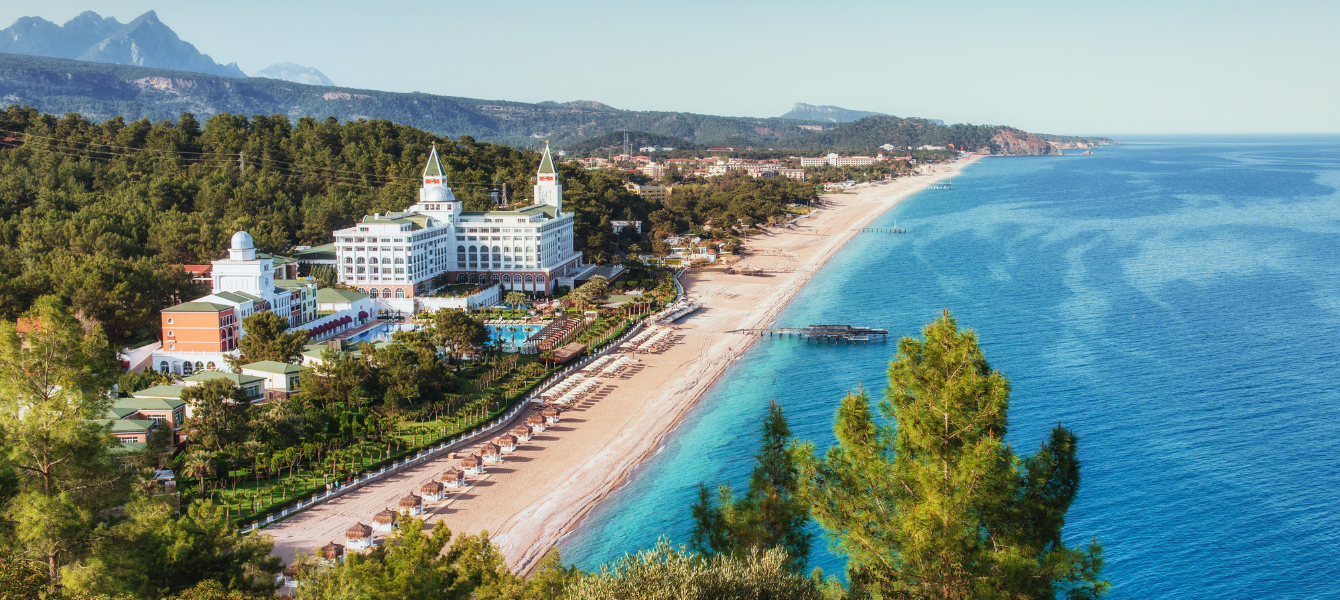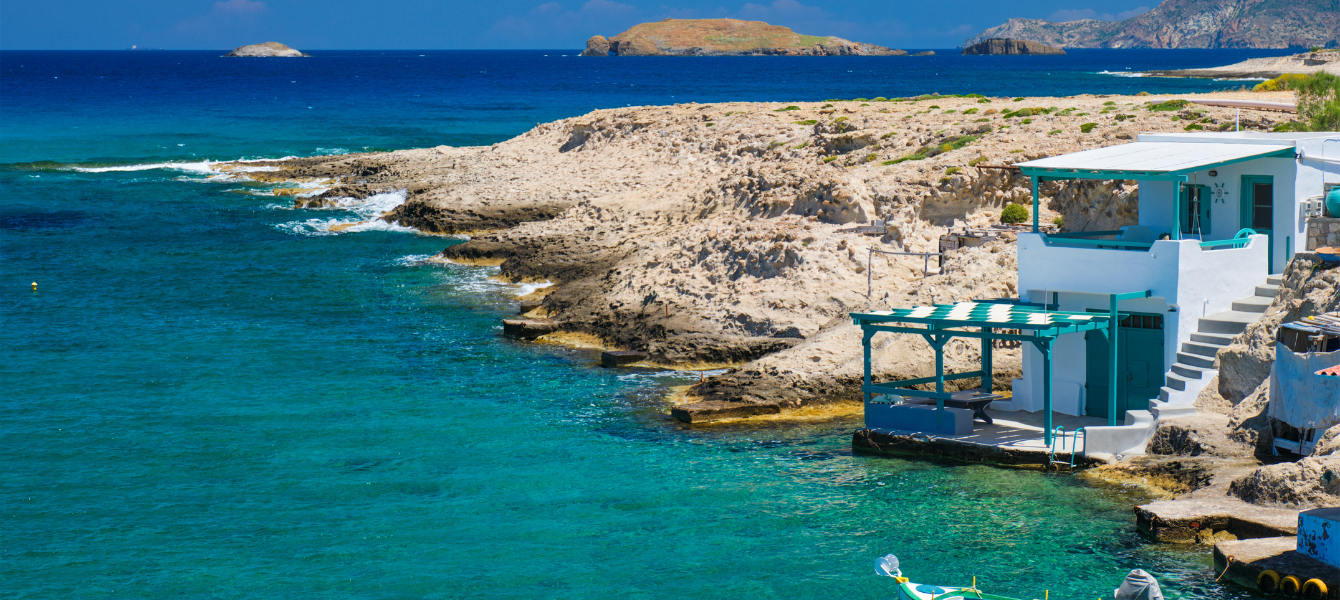Unarguably one of the most fascinating cities in the world, Barcelona has got it all: amazing year-round weather, tantalizing local cuisine, vibrant nightlife, eye-popping architecture, and captivating museums.
And while several of the city’s attractions are paid it’s certainly possible to enjoy Barcelona on a budget, as this destination flaunts a dazzling array of free activities. Just think of uncovering lush green spaces, sunbathing in worldwide famous beaches, and going on free walking tours to explore every inch of this beautiful city.
Sounds like a plan? Then read on to learn more about the top 15 free attractions in Barcelona.
Also, don’t forget to check our comprehensive Barcelona Travel Guide, which is filled with high-level travel tips that will help make the most out of the city.
Find Places To Stay In Barcelona, Spain
The Top 15 Free Things To Do In Barcelona, Spain
Get Lost in the Magical Gothic Quarter
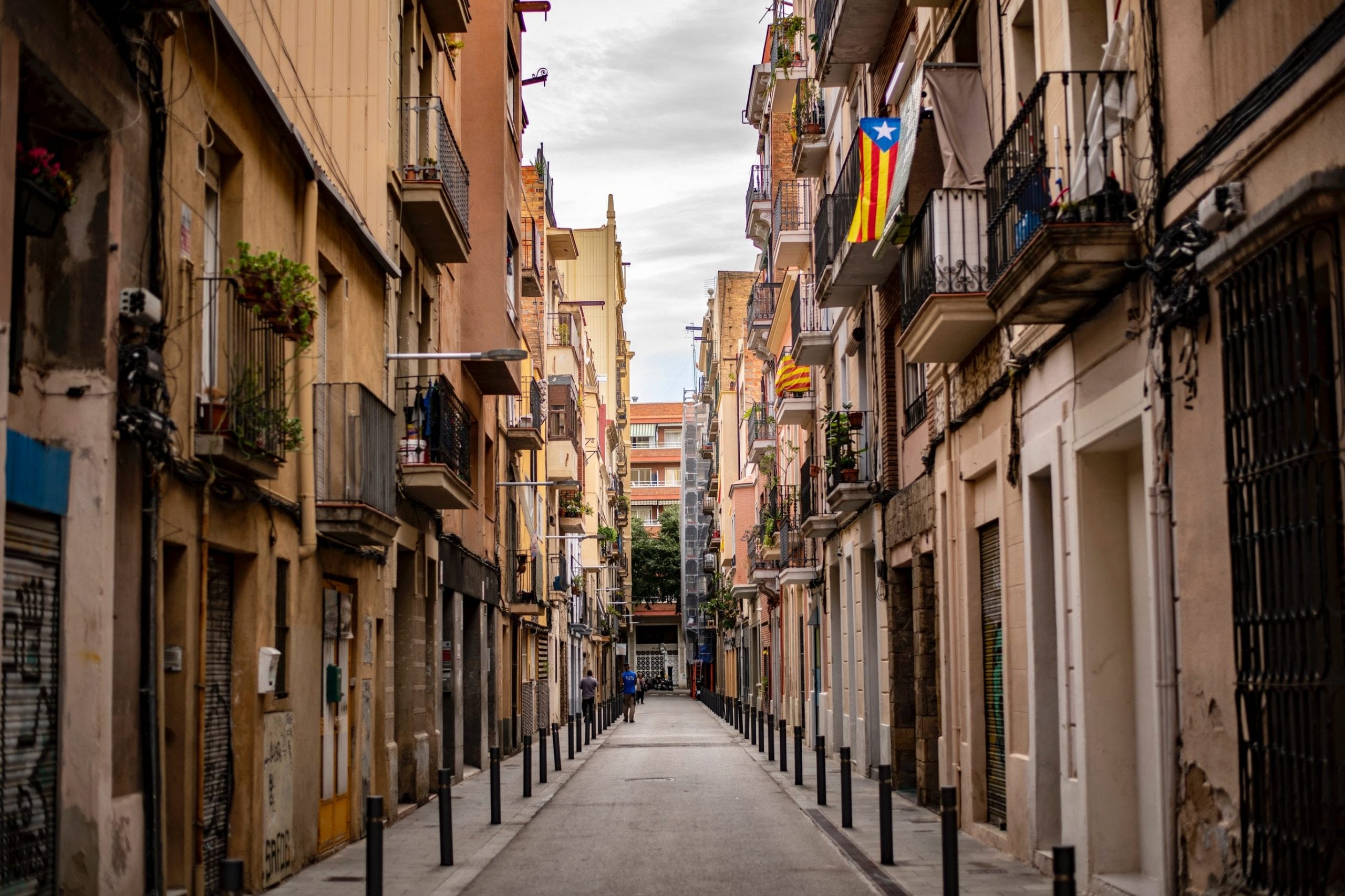
Wander around the Gothic Quarter. Although free walking tour options are available, we suggest you soak up the magic of Barcelona’s oldest neighborhood.
It is the Barri Gotic where you can find the oldest buildings in Barcelona, including the Cathedral, Placa Sant Jaume, Placa del Reial (the street lamps is one of the first Gaudi’s projects when graduating), and Carrer Montcada.
With tapas bars on every corner and locals catching up with friends over a beer or wine, it is easy to imagine Picasso and Hemingway sipping on a glass of absinthe in some of the oldest and most historic bars, like Bar Marcella. To know more, read about free legendary places to visit in Barcelona.
Apart from the most popular tourist attractions, you can learn about Barcelona’s Jewish past here by visiting the old synagogue or see Barcelona’s, Roman Temple. After all, see the Gothic Cathedral and learn from where the quarter gets its name.
Visit The Picasso Museum
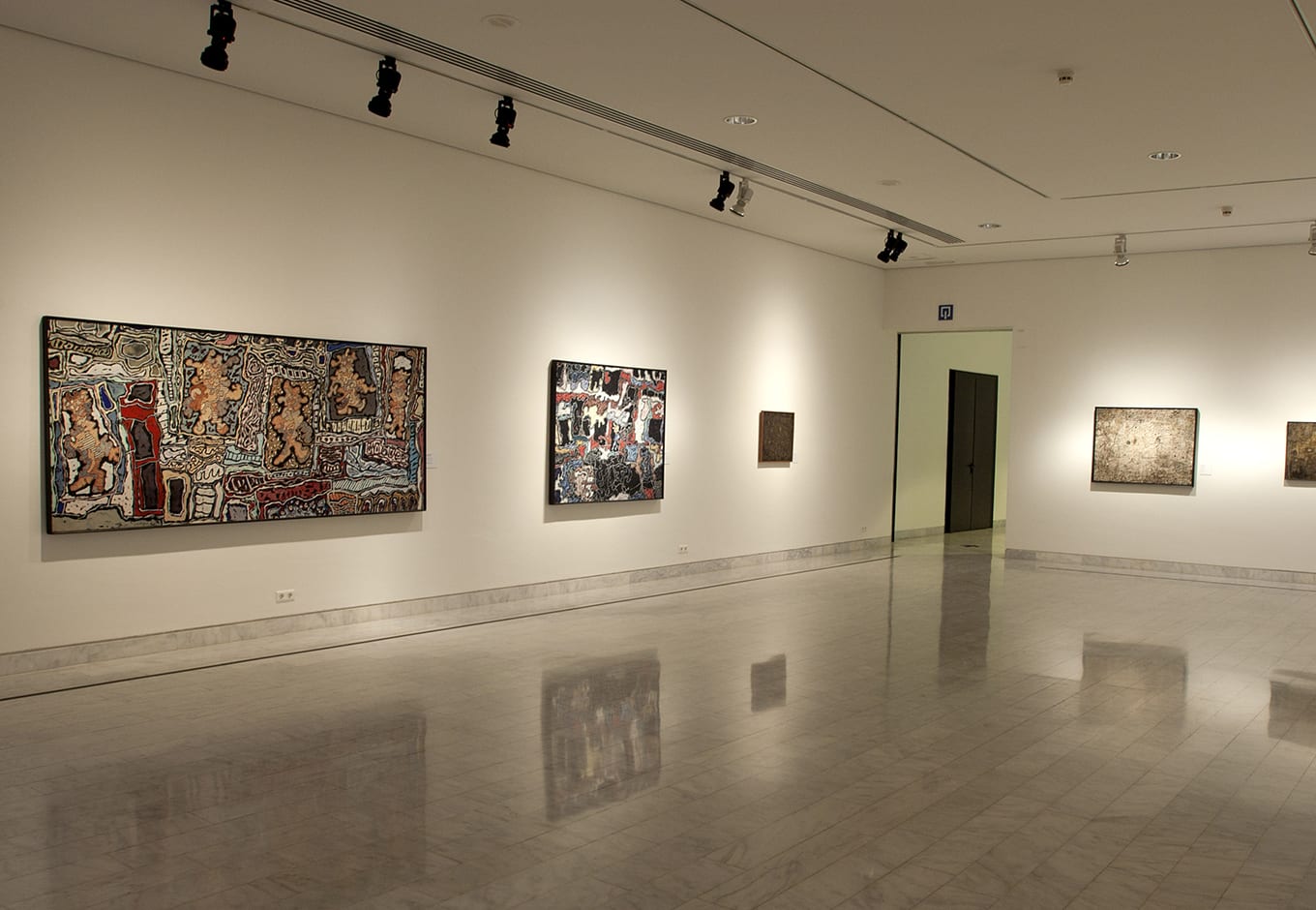
Picasso Museum in Barcelona houses one of the most extensive collections of this cubist artist. It was founded by Picasso’s friend Jaume Sabartes, and, although first intended to be set up in Malaga, the birthplace of Picasso, it was the artist itself who suggested establishing the museum in Barcelona.
In cooperation with the City of Barcelona, the museum was housed in the Old City, where any visitor can see the permanent collection covering the early years of Picasso’s artistic life, also the Blue Period.
You will see some of his darkest works created during the winter at the Madrid Academy, and the cheerfully bright works from vacations in the village of Horta de Sant Joan. The later works of Blue Period, when he could not afford to buy colors, and the entire collection of the Las Meninas series, are worthy to see.
The museum itself is housed in four medieval buildings dating back to the 13th century: Palau Aguilar, Palau Baró de Castellet, Palau Meca, Palau Finestres, and Casa Mauri.
You can enter the Picasso Museum for free on the first Sunday of every month, as well as Thursday afternoons. The open door days on February 12th, May 18th, and September 24th have free entrance as well. However, the free entrance tickets are subject to availability and must be booked in advance.
See The Famous Casa Mila (La Pedrera)
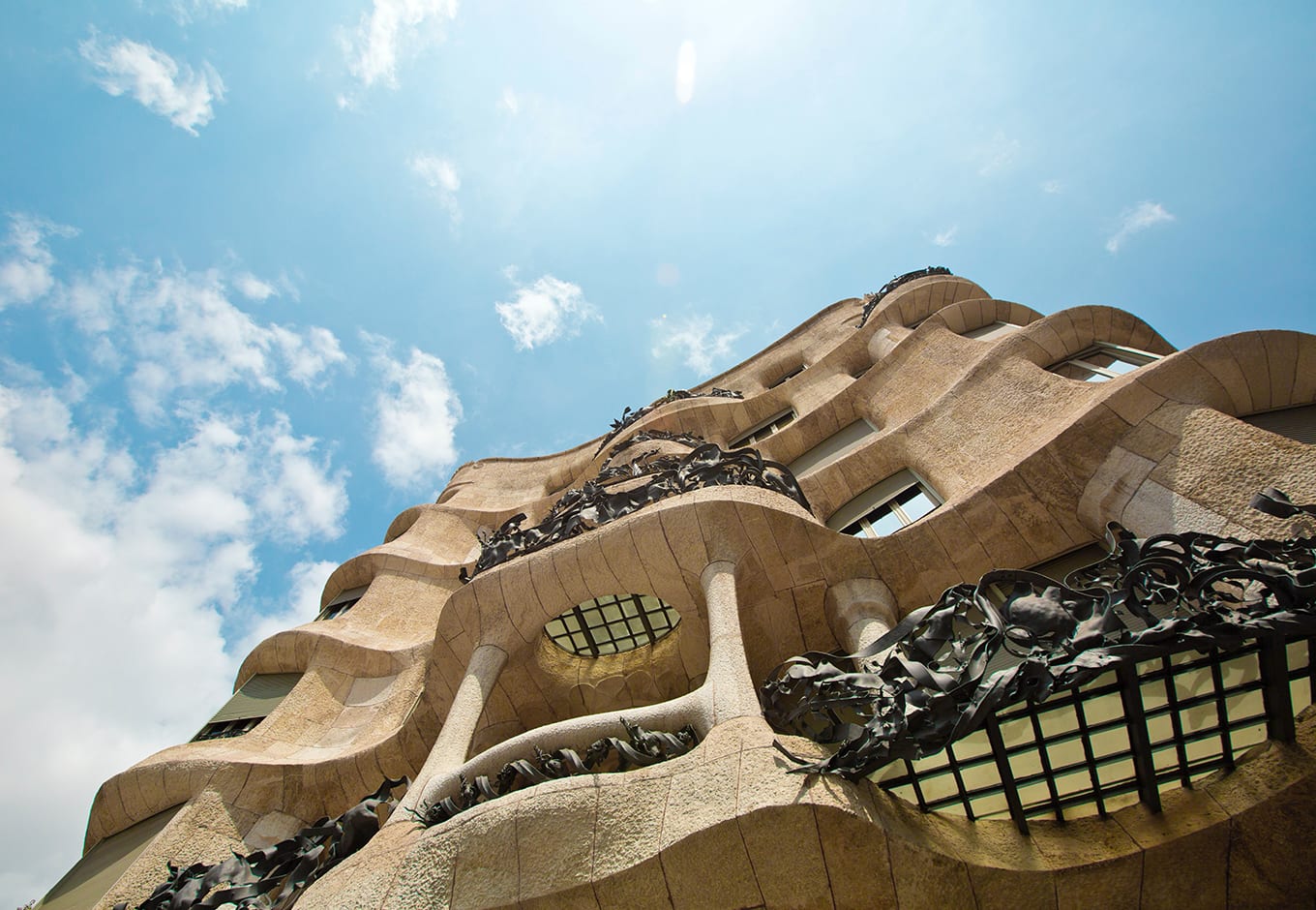
Known as “The stone quarry”, due to its rough-hewn appearance, it is the last private residence designed by Antonio Gaudi built between 1906 and 1912. Several structural innovations, such as its free-plan floor, underground garage, and spectacular roof terrace, made it a true forerunner of functional modernism architecture.
As Barcelona is a truly walkable city, to get to Casa Mila in Eixample from the Gothic Quarter will take you just 25 minutes. Taking a metro will only save you ten minutes.
Indulge In Tapas
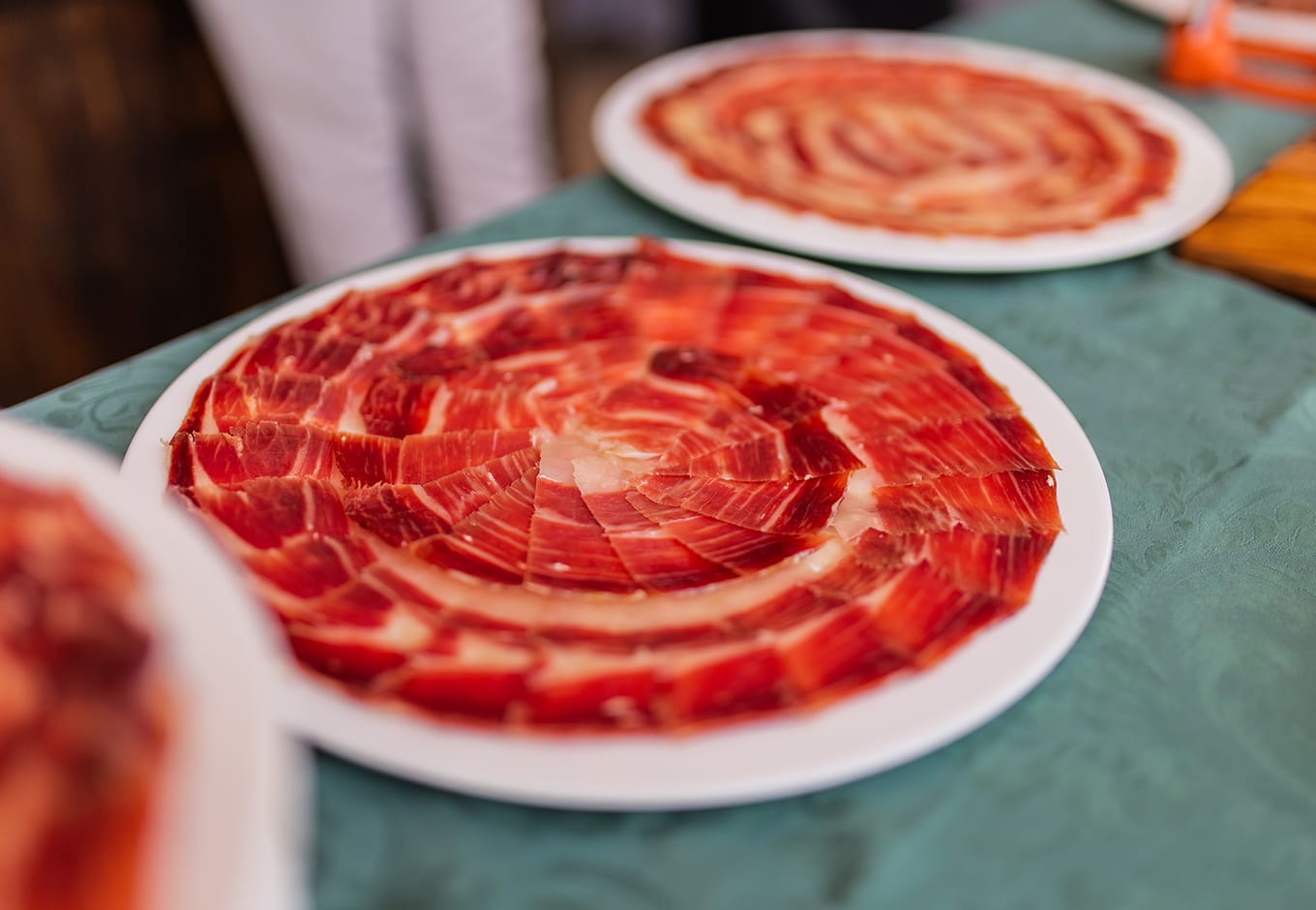
While tapas do not exactly come for free, the prices are fairly low, and you can sample the local produce of wide variety in just two days, without spending a fortune.
Some local Catalonia must-try tapas are buñuelos de bacalao (salt cod fritters), jamón ibérico de bellota (acorn-fed Spanish ham), or, most popular, la bomba (fried potato croquette stuffed with beef and topped with garlic aioli and spicy bravas sauce).
Here are some of the most authentic tapa bars around Barcelona’s top sights:
- Museum Picasso – Bar del Pla (modern bar with a wide specialty menu )
- Del Mercat de la Boqueria – El Quim (steel stall with freshly prepared seafood)
- Gothic Quarter – Bar Celta (tiny bar – try octopus with white wine served in ceramic bowls)
Admire Barcelona’s Architecture on Passeig de Gràcia
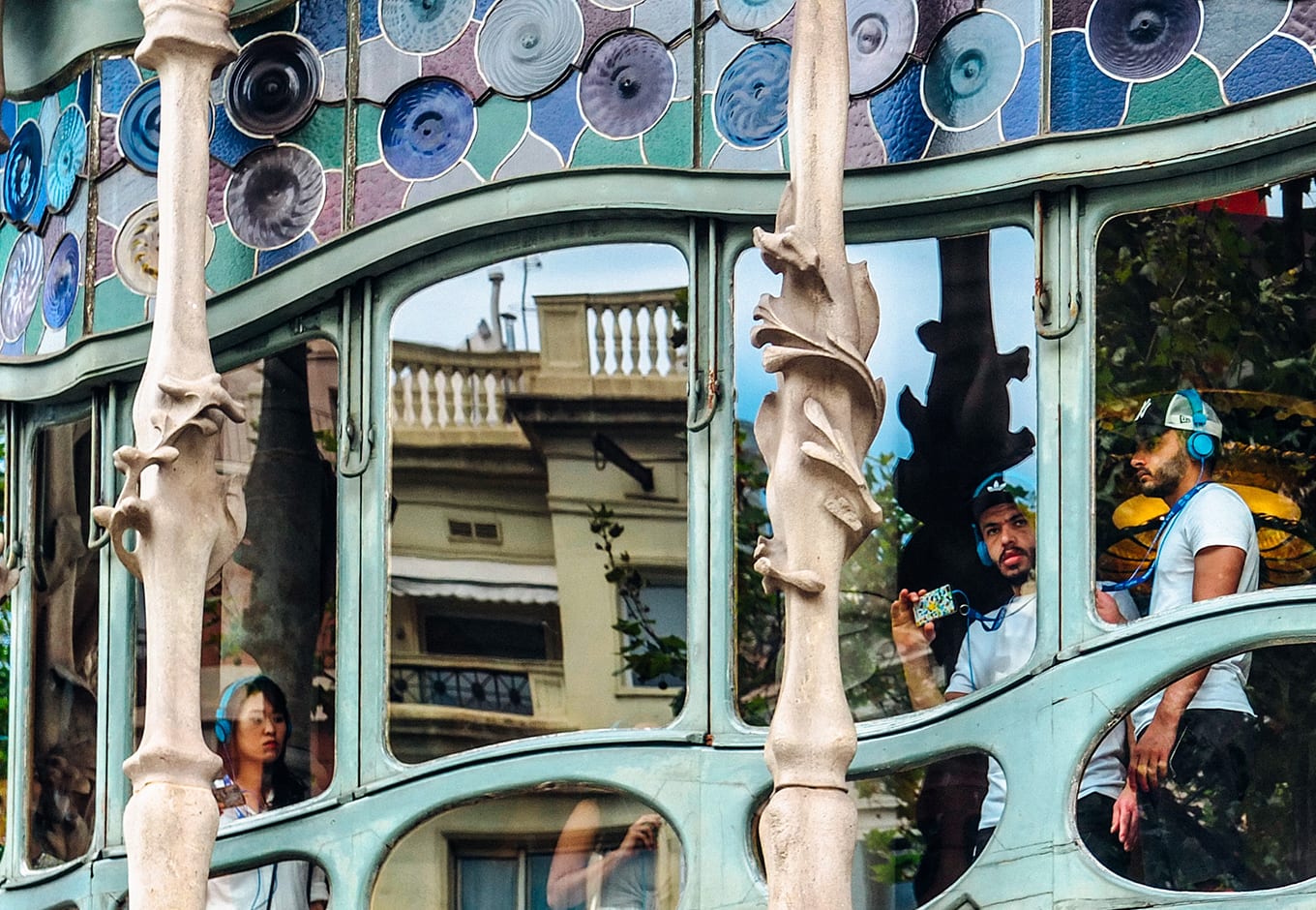
As one of the major avenues in Barcelona, it is known as both shopping and business areas for locals, but the architectural pieces sit in the middle of attraction for those coming to Barcelona for a travel visit.
However, just strolling around the avenue is truly mesmerizing. The Passeig de Gracia is also the only street in the world that houses two buildings cataloged by UNESCO as World Heritage of Humanity made by the same architect (you guessed it right, Antonia Gaudi!).
These are Casa Batllo (No. 43) and Casa Mila (La Pedrera), located No. 93. The best thing? If you are short on time, the fastest way to capture modernist architecture is by strolling around and looking at the exteriors of the buildings. And it is completely free every day and night!
Casa Amatller built by Joseph Puig I Cadafalsch, is a monument of national interest and form, together with Casa Batllo and Casa Lleo Morera the popular Illa de la Discordia (Block of Discord). Built in Catalan Gothic style reminiscent of the Netherlands.
Casa Lleó Morera (No. 35) built by Lluis Domènech I Muntaner is considered one of the best works of modernist architecture. To decorate the building, required more than 40 sculptors and craftsmen.
Casa Fuster (No. 132) is one of the last architectural works carried out in the city in the modernist style, with neo-Gothic elements.
Sit down and relax in between flocks and pigeons in the Placa de Catalunya, the city center and the place where the old city (Gothic Quarter, Raval, and Ciutat Vella) and the 19th century-built Eixample meet.
Catalonia Square is also famous for its many statues, fountains, and mosaics. From the square, you can head towards La Rambla, which, just as Passeig de Gracia, ends at the square.
The Museum of History is also located on the avenue.
Visit The Santa Maria del Mar Cathedral
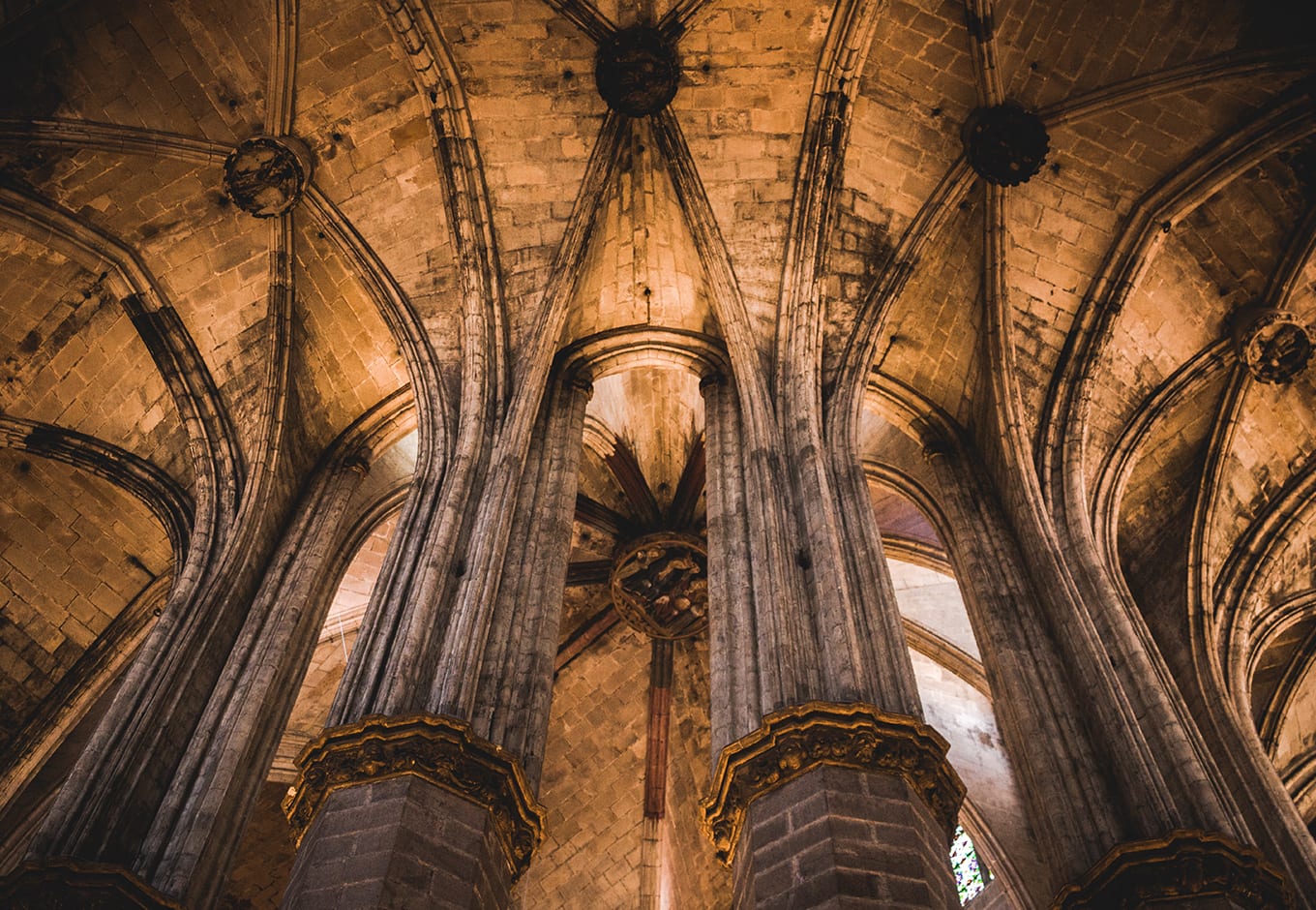
Santa Maria del Mar, known as Cathedral of the Sea, is a gothic church built in the 14th century. The construction of the temple was started by a group of believers living in the Port of Barcelona and Ribeira, who both financed and also physically worked on the temple.
The cathedral has extraordinarily high ceilings and black walls, resulting from a fire in 1936.
The cathedral is located just between Ciutat Vella and the Gothic Quarter, and it is just 650 feet yards away from Picasso Museum and 1300 feet away from the Gothic Quarter. You can also access the church by metro line No. 4 (Jaume I). The entrance is free every day.
Go To The Magic Fountain Show in Montjuic
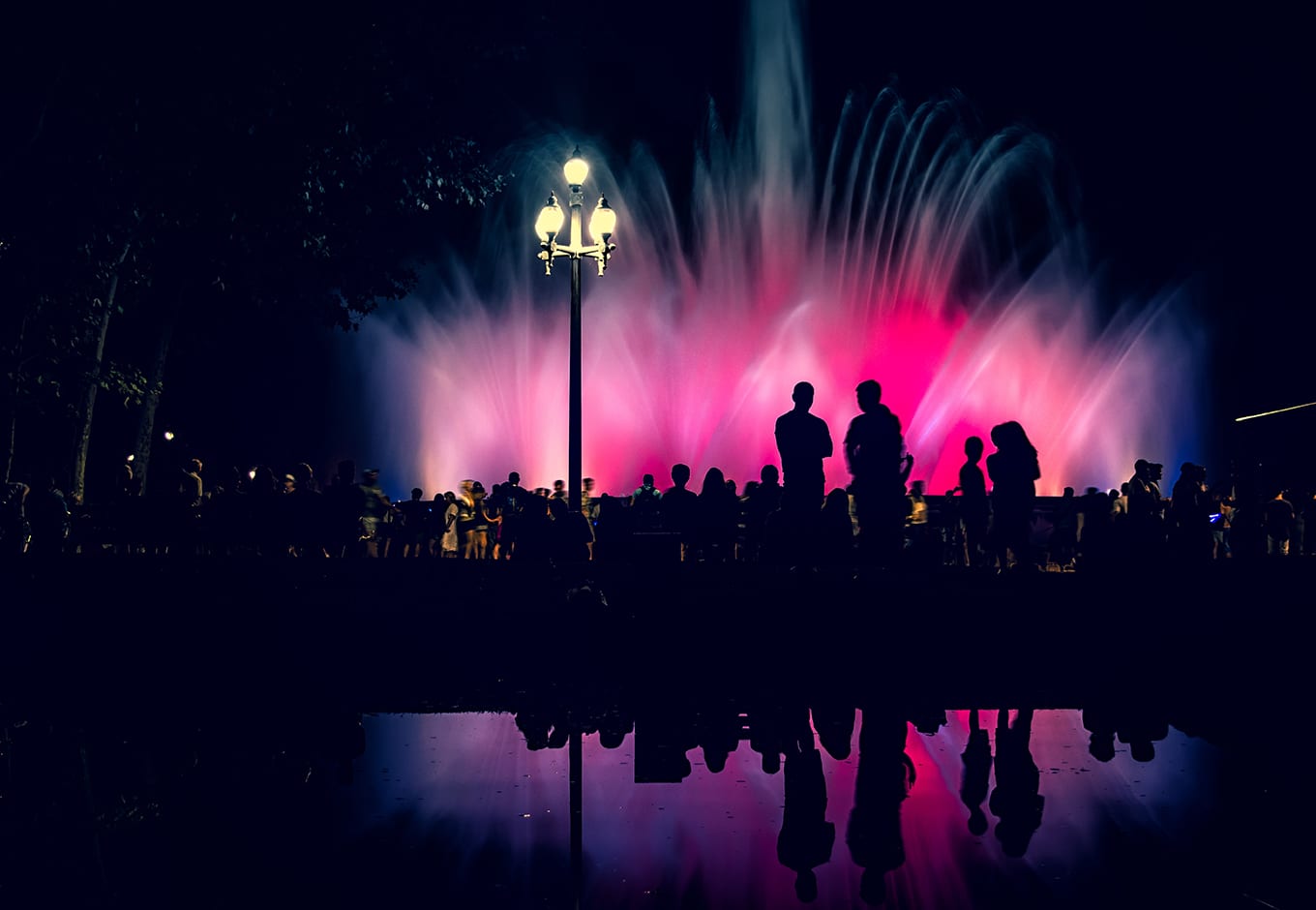
Built the World Exhibition back in 1929 as a water and light show, it saw an upscaling with added music in the 1980s. Today, the water show is one of the most magical experiences of Barcelona. With the impressive lights, it is truly an experience you must not miss.
The show days depend on the season — you can check the latest information on Barcelona’s City Council website. The Magic Fountain is 5 minutes walk from Plaça d’Espanya, and 30 minutes walk away from the Northernmost end of Rambla and Catalonia Square.
Visit Glorious Catalonia’s National Art Museum
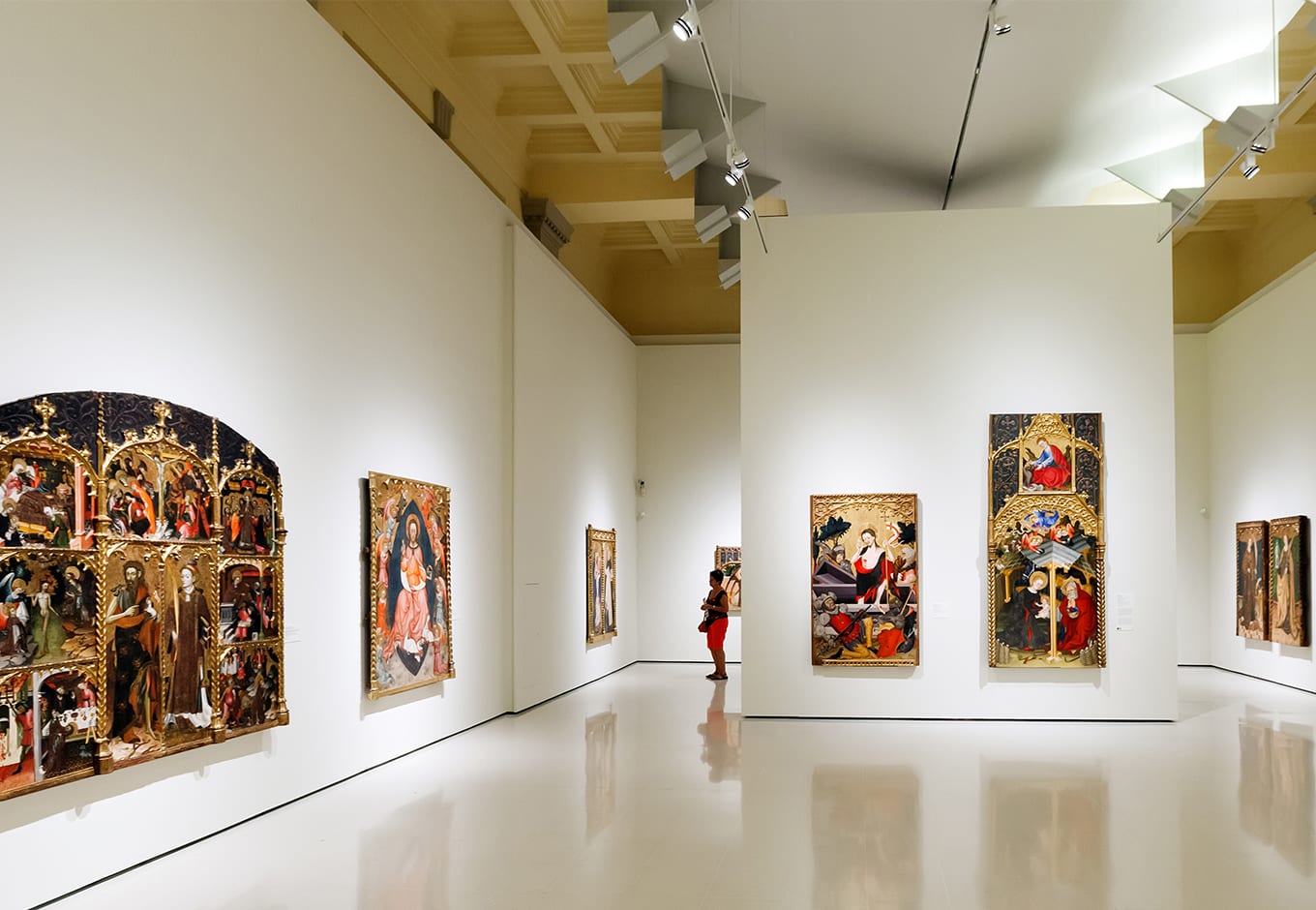
This is surely one of the top free things to do if you are an artist in the heart — the museum’s collection stretches from Medieval Romanesque and Gothic art to Renaissance and Baroque, to Modern art and photography.
The building itself with its surroundings are worth a visit. Dating back to 1929 when Barcelona hosted the Expo, the Museum of Ethnology and Olympic Museum was constructed on Mount Montjuic.
Just as many other museums offer free entrance, also Catalonia’s National Art Museum has free entry on Saturdays from 3 pm onwards and on the first Sunday of each month. Another way to get into the museum for free is to plan your visit to Barcelona around May 18th or September 11th in celebration of The International Day of Museums and National Day of Catalonia.
Watch The Sunset At Barcelona’s Bunkers del Carmel
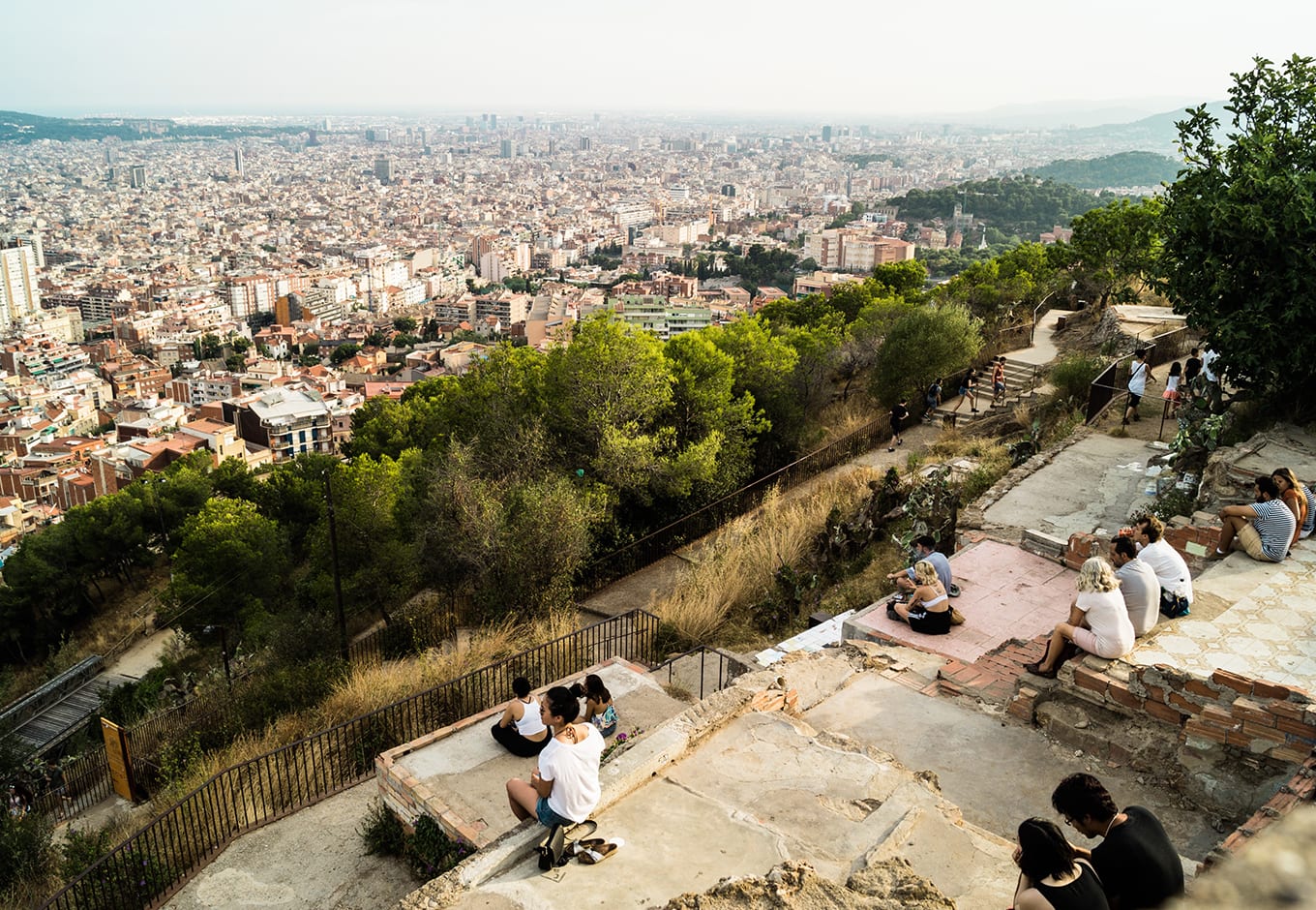
If you aim for a free 360° view for free, then visiting Bunkers del Carmel is worthwhile. You can see La Sagrada Familia and Mount Montjuic from here.
Known also as El Turó de la Rovira, or simply The Bunker, the place was closed to the general public throughout centuries. During the Spanish Civil War in the 1930s, the Bunker was used to defend the city from aerial attacks and housed several guns.
Later, during the Franco regime, the bunkers became a small slam town, known as Cannons neighborhood, and by the 1960s 3,000 people were living in the area. Before the Olympic games in 1992, the City Council removed the residents living in the bunkers and placed them in apartments.
After being long abandoned in the 1990s and early 2000s, the place is regaining popularity as a great place to escape the crowds and have great views of the sunset. You can reach the Bunkers del Carmel by metro getting out at Guinardó Hospital de Sant Pau on Line 4.
Take A Free Walking Tour Of Las Ramblas
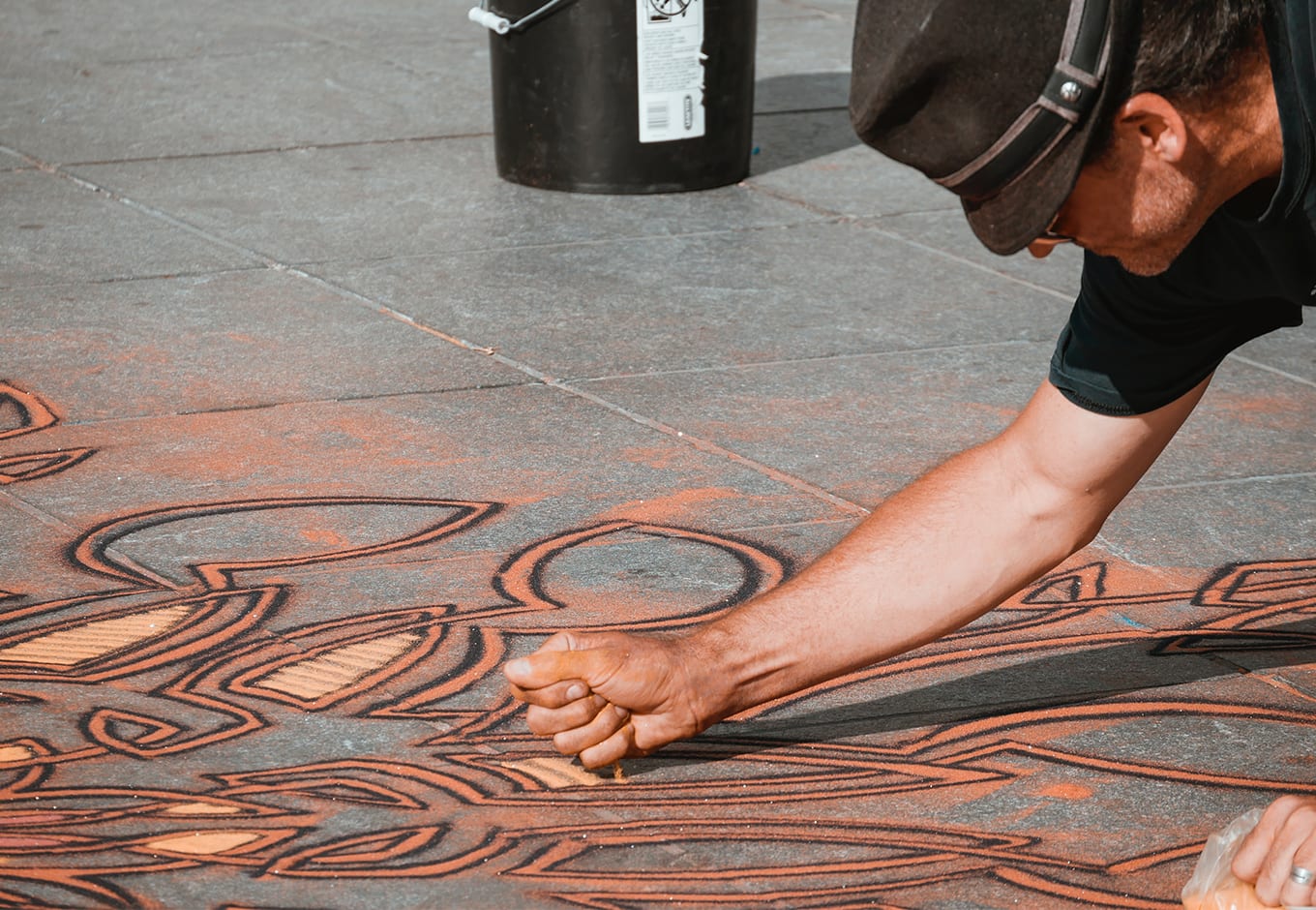
Las Ramblas is famous for its street performers — musicians, street artists and painters, human statues, and clowns. Fun fact? The name derives from Arabic “Ramla” meaning sandy riverbed, and, indeed, that’s how the street started as a dried-out stream outside the Gothic Quarter.
Visit The La Boqueria Market
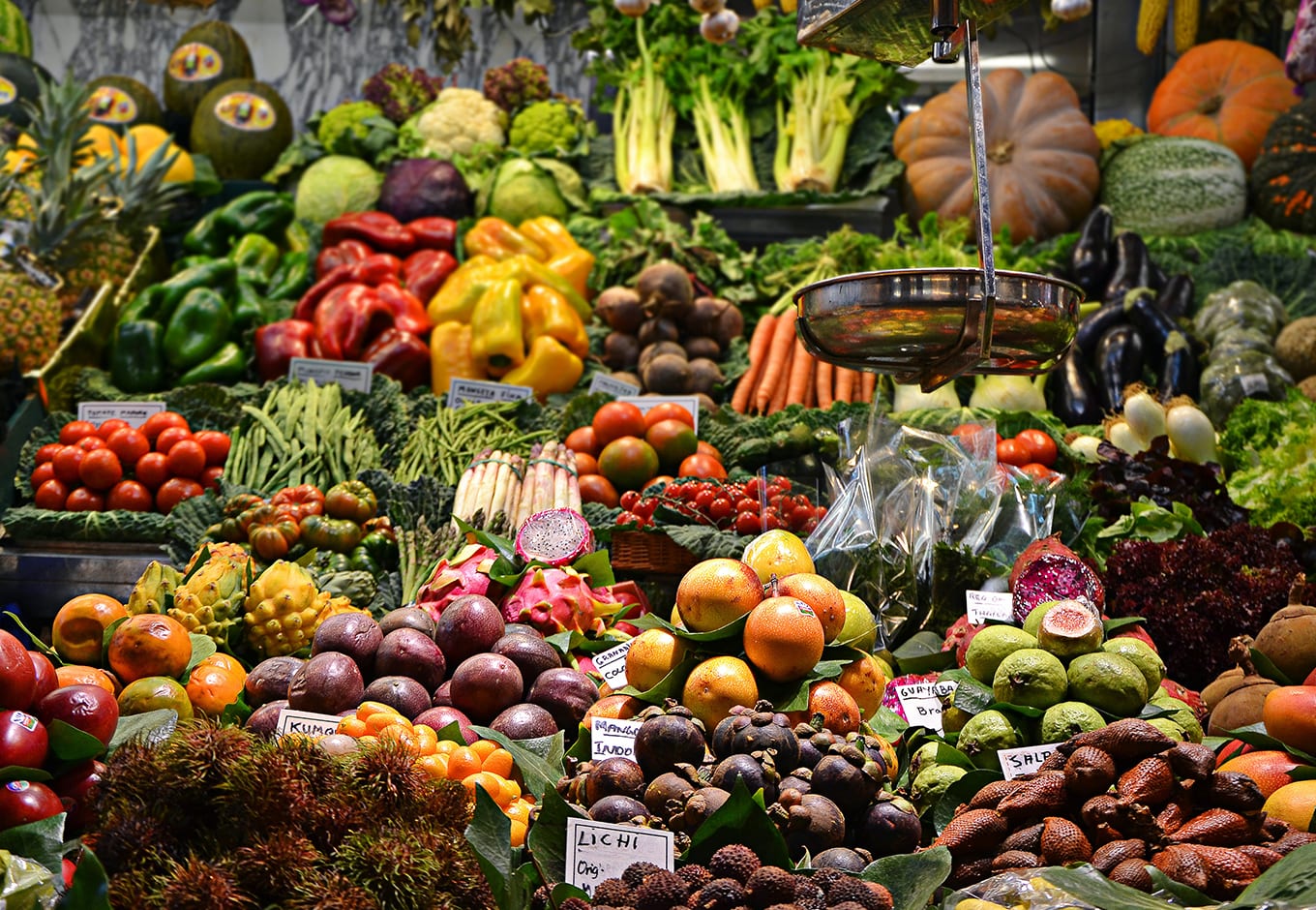
We already wrote about the market stalls in La Boqueria Market filled with chocolate candies and dried fruits children fall prey for. But this famous market is not only one of the best free things to do in Barcelona with kids, as you can get a freshly squeezed juice as a refreshment in the middle of the run through Barcelona.
Check The Roman Remains of Barcino
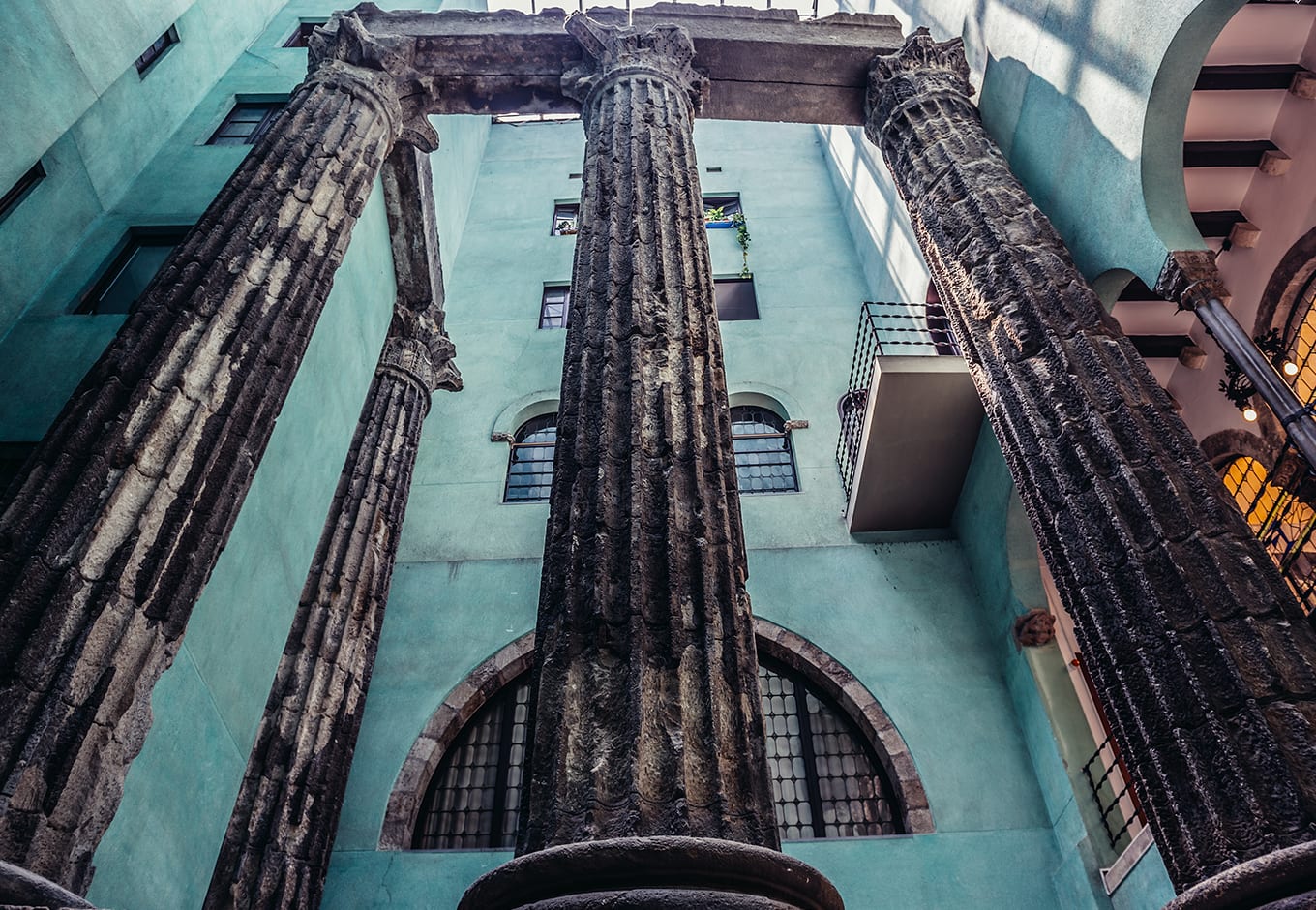
When the Romans arrived between 15th and 13th BC, they found a colony called Julia Augusta Faventia Paterna Barcino on Mount Tabor, where Placa de Sant Jaume is today. The wall built around it marked the city until the Middle Ages, and it kept its Roman structure with a forum in the center.
You can see the Roman ruins in the MUHBA within the building. This museum tops the list of free things to do in Barcelona for any history geek, and you can enter for free on the first Sunday of the month all day long, and any other Sunday from 3 pm.
The museum is accessible by Lines 1 (Catalunya, Urquinaona), Line 3 (Catalunya, Liceu), and 4 (Urquinaona, Jaume).
Marvel At La Sagrada Familia
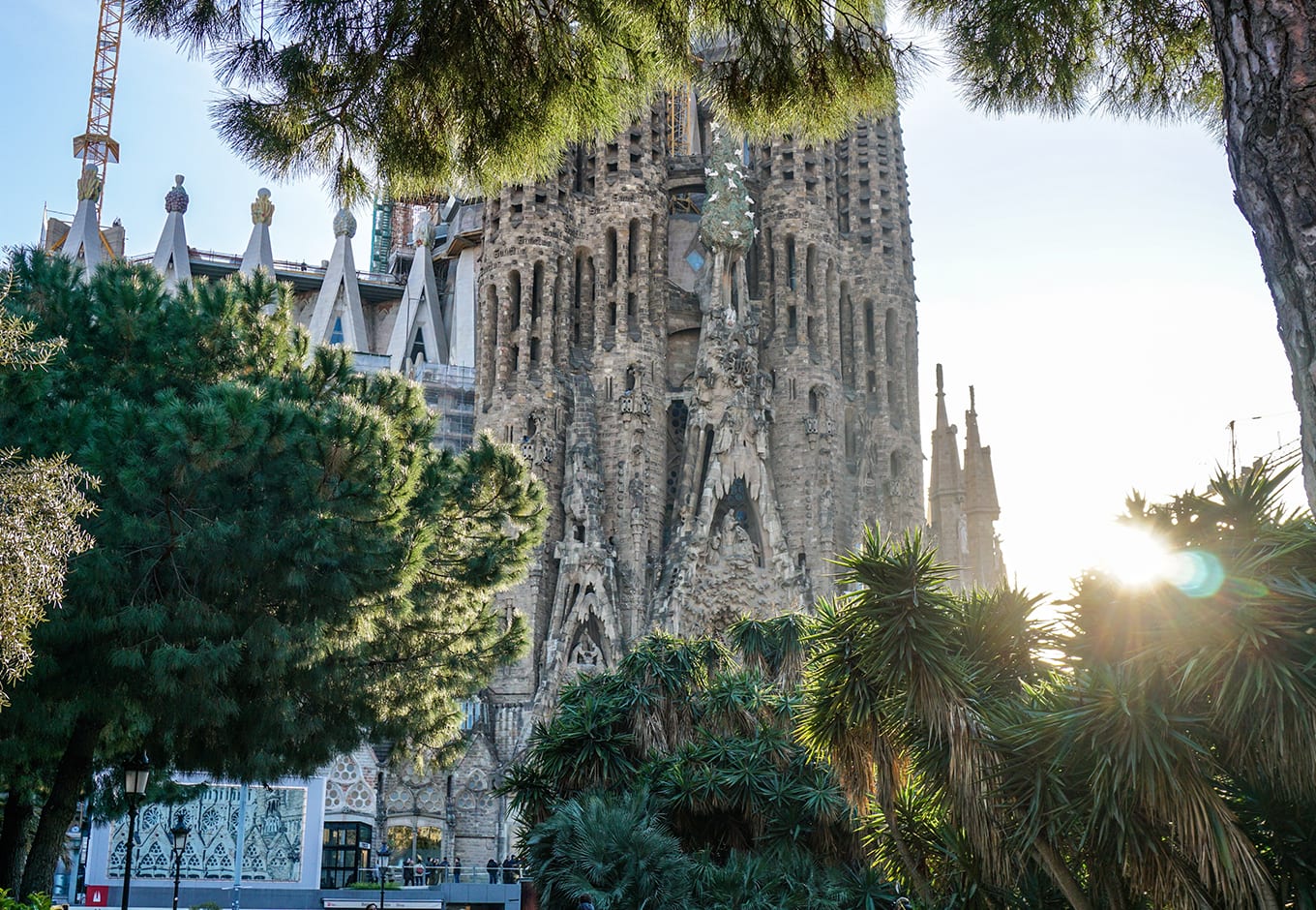
Listed as one of the top free things to do in Barcelona, this spectacular Gaudi masterpiece does not require more explanation. It is among the best free things in Spain, and for that matter, it is important to know the best time to visit to get a seat.
You can enter during the basilica masses. Sunday morning mass begins at 9 am, and Saturday evening mass begins at 8 pm, but there are limited spots (doors open 30 minutes before). Crypt Masses are for free as well and run every day in Spanish or Catalan.
Go For A Stroll In Parc De La Ciutadella
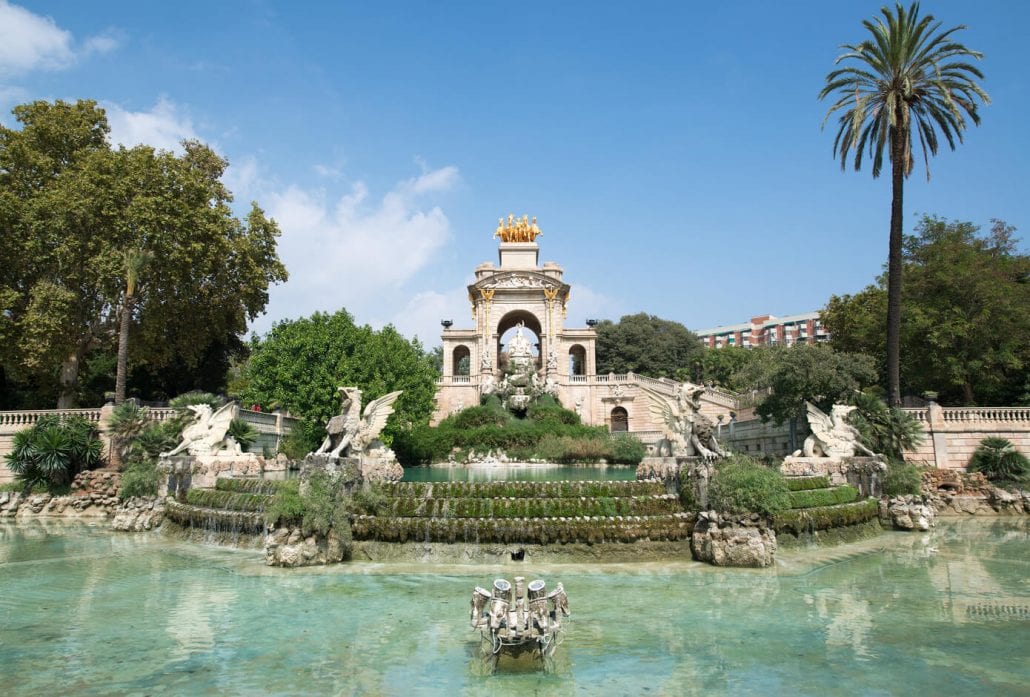
Of all Barcelona’s parks, Parc de la Ciutadella has got to be the best one for an idle afternoon stroll.
This verdant 17-hectare oasis is placed on the northeastern edge of Ciutat Vella, and it’s home to an array of attractions, including the Barcelona Zoo, the Museu d’Art Modern, the Zoological Museum, and the Museu de Geologia.
A lush crown jewel nestled in the middle of the metropolis, the Ciutadella Park is also one of the top things to do in Barcelona with kids thanks to its array of things to see and do.
Soak Up The Sun In The Barceloneta Beach
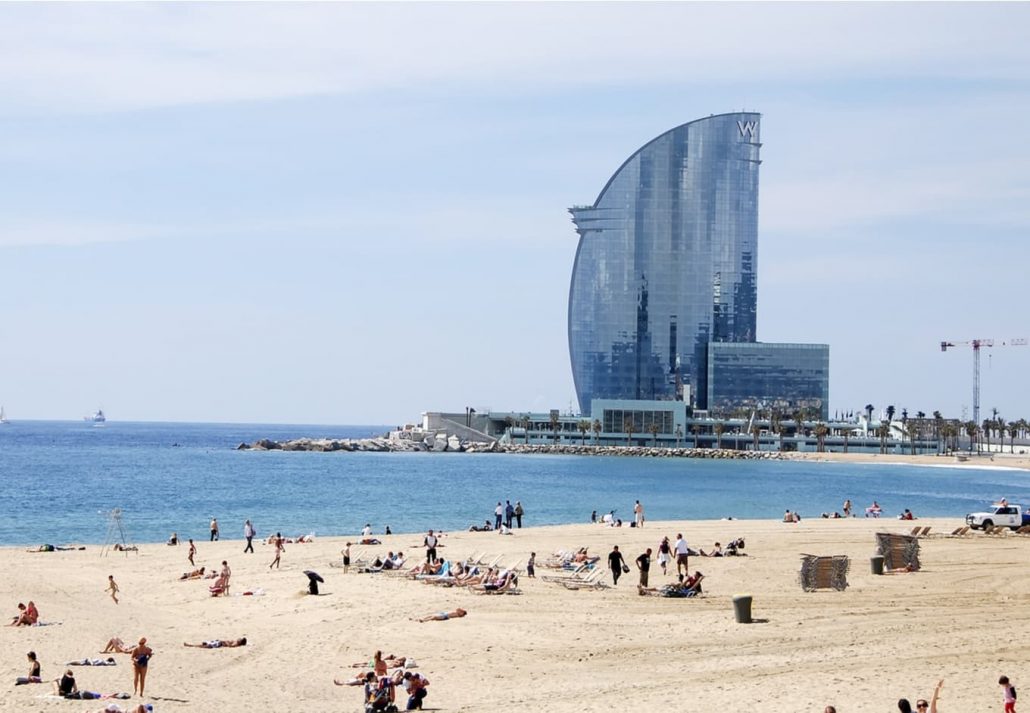
The world-famous Barceloneta Beach is one of Barcelona’s most sought-after spots, especially during the summer months. Beloved by locals and visitors alike, this golden sand beach is a prime pick for swimming, sunbathing, and water sports such as windsurfing and kite surfing.
After a sundowner on the beach, head over to the nearby bars for some tapas and a jar of sangria!
Visit The Barcelona Cathedral
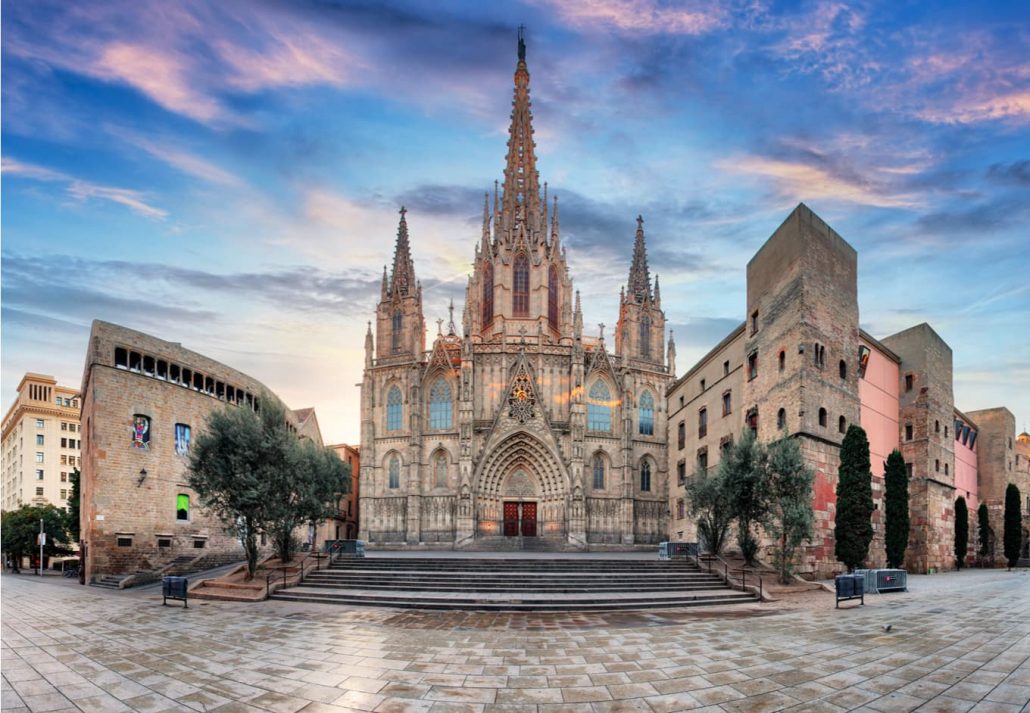
Erected on the site of a Romanesque temple, in front of Plaça de la Seu, the Barcelona Cathedral is a must-visit for anyone who’s exploring the charming Gothic Quarter. This majestic church was built over 150 years, and it’s known for its alluring Gothic façade, and a sparkling wealth of interior features.
Visit the inside of the Barcelona Cathedral to discover an eye-popping choir, and several 215 keystones, dating from the 14th and 15th centuries, Gothic and Baroque altarpieces, several three-paneled stained glass windows, and an artfully designed organ.
Free Museums On Sundays In Barcelona
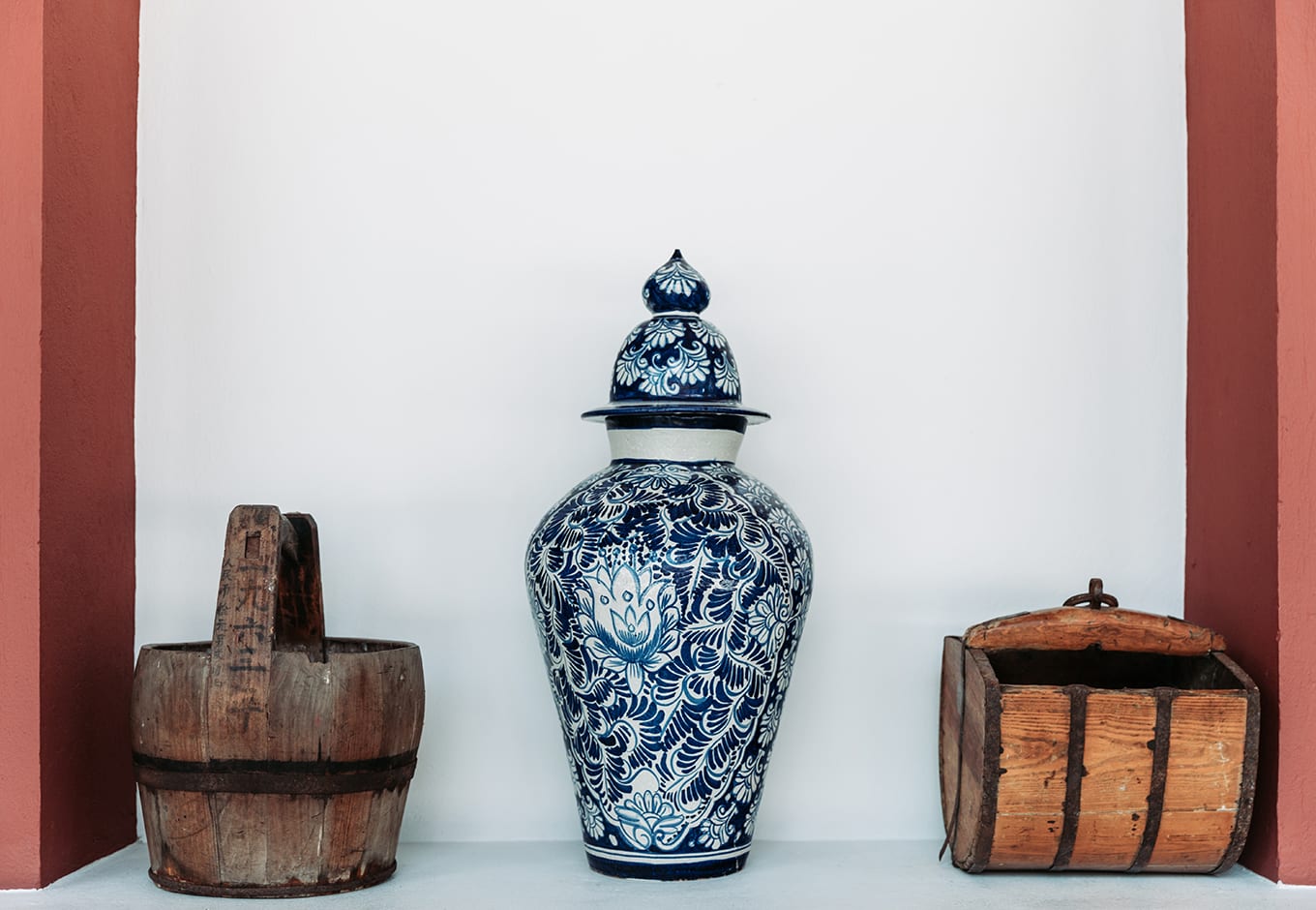
City History Museum
The Museu d ‘Història de la Ciutat (City History Museum) in the Gothic District is among the best free things to do in Barcelona if you are interested in history, all the way from Roman times. You can enter for free either with the Barcelona Card, or any Sunday from 3 pm onwards, or all day long on the first Sunday of each month.
Botanical Gardens of Barcelona
The Botanical Gardens of Barcelona in the Montjuic hill set amongst stadiums used in the Summer Olympic Games of 1992, is worth a visit, and the free entrance on the first Sunday of each month all day, or any other Sunday from 3 pm, is a good reason to go.
Ethnological & Cultures of the World Museum
If you are looking for free things to do in Barcelona on Sunday, the Ethnology Museum might be a starting point for a different outlook and interpretation of your social surroundings. With a collection of five continents and audiovisual and multimedia content, this museum is also a great starting place to learn Catalan culture, traditions, and craftsmanship.
World Cultures Museum Centre de Cultura Contemporània de Barcelona
Located in El Raval, the museum and arts center focusing on creative research and knowledge production has free admission on Sundays after 3 pm.
Maritime Museum
The Maritime Museum of Barcelona is an exciting place to learn about vessels, boats, shipyards and galleys, and the evolution of the sea economy in Catalonia. Housed in the Barcelona Royal Shipyards in a building of Gothic architecture, this museum fits in the real-size replica of the flagship of the Christia fleet of the 16th century. Free admission on any Sunday from 3 pm.
Design Museum
The DesignDesign Museum of Barcelona focuses on space design, product design, information design, and fashion, resulting from merging several other smaller museums. Free entrance every Sunday.
Museu de Ciències Naturals de Barcelona
Both adults and children will love spending some time snooping around the galleries of Barcelona’s Natural Science Museum. Free every Sunday from 3 pm onward, and all day on the first Sunday of each month, the museum houses a must-see selection of more than three million specimens collected and preserved for more than three centuries.
Browse. Book. Stay.
CuddlyNest provides all accommodations to all travelers at the best price. Find unlimited travel inspiration on our blog and social media channels.
Here are some curated readings for you:
The Top Legendary Barcelona Attractions
7 Wonders of Barcelona: Legendary Places to Visit in Catalan Style
The Top 13 Spanish Cities to Visit in 2021
Best Things to do in Barcelona with Kids
Europe Travel Guide
